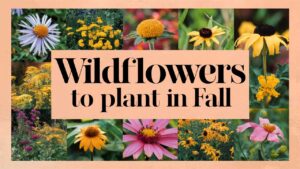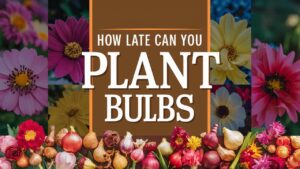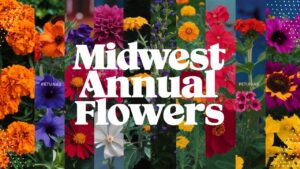In this post, we’ll explore a selection of blue annual flowers, exploring their unique characteristics, growth habits, and the delightful contributions they can make to your floral displays.
Lily of the Nile

Lily of the Nile, also known as Agapanthus, captivates gardeners with its stunning clusters of blue or purple flowers. Native to South Africa, these perennial plants are often treated as annuals in cooler climates. They thrive in well-drained soil and full sun but can tolerate partial shade, making them versatile for many gardening styles.
The prominent feature of the Lily of the Nile is its tall, elegant flower stalks that soar above the thick green foliage, creating a striking look. Their blooms typically emerge in summer, forming spectacular round clusters that resemble fireworks. Gardeners adore this plant not only for its beauty but also for its ability to attract pollinators, including bees and butterflies.
Isotoma
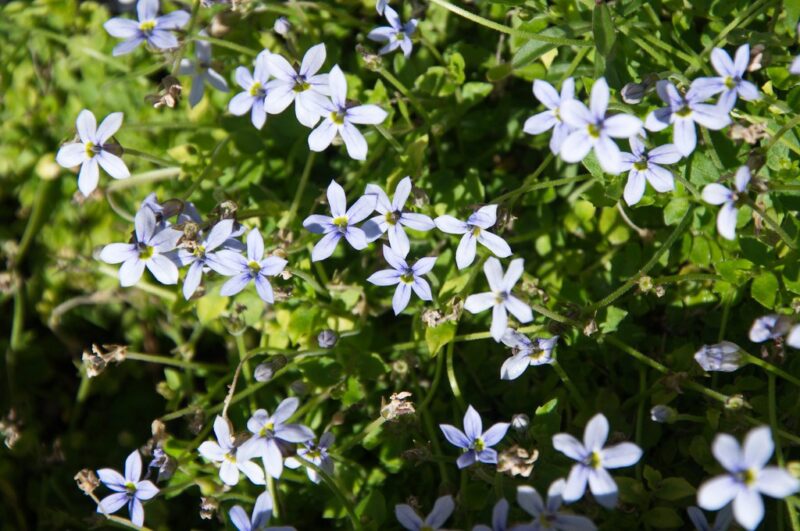
Isotoma, often known as the blue star creeper, is a charming annual that lends a breathtaking blue effect to gardens. It is characteristically low-growing and spreads outwards, creating a stunning carpet of vibrant blue flowers throughout the spring and summer months. Their delicate star-shaped blooms add a sense of whimsy, making them a popular choice for borders and rock gardens.
While Isotoma thrives in sunny locations, it can adapt well to partial shade, making it a versatile ground cover option. It’s crucial to keep the soil moist to achieve the best blooms, as this helps the plant maintain its health and vibrancy. With little maintenance required, Isotoma is an excellent choice for both novice gardeners and seasoned horticulturists alike.
Salvia
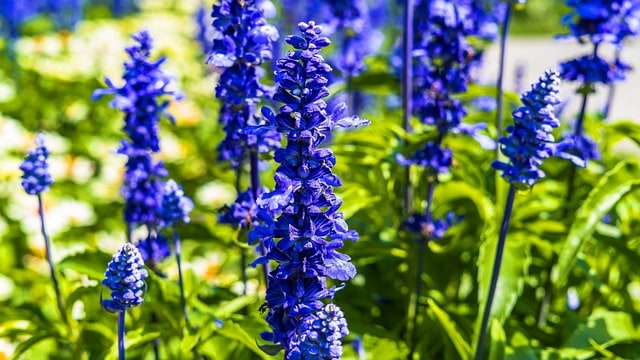
Salvia, commonly known for its sage-like fragrance and vibrant blooms, offers an array of annual options featuring beautiful blue flowers. Not only is Salvia visually appealing, but it is also resilient, thriving in varied soil types and conditions. This drought-tolerant plant is a perfect addition to any garden, providing long-lasting blooms from early summer into fall.
Gardeners appreciate Salvia not only for its beauty, but also for its ability to attract beneficial insects and pollinators. The tall spikes laden with numerous tiny flowers are a beacon for hummingbirds and butterflies, creating a dynamic atmosphere in any garden. Whether used in mass plantings or as a border, Salvia can truly make an impression.
Cornflower
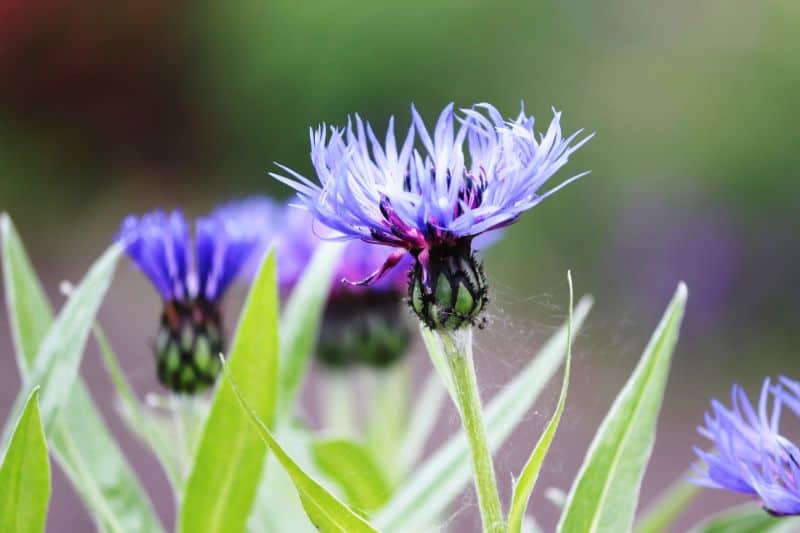
Cornflower, or Centaurea cyanus, offers a vivid blue hue that is hard to miss. Originally a wildflower found in Europe, it has become a favorite among gardeners seeking to add a splash of color to their landscapes. Cornflowers bloom typically in late spring and early summer, producing an abundance of daisy-like flowers that sit atop sturdy stems.
One of the fantastic qualities of the cornflower is its adaptability; it can thrive in both poor and fertile soils, making it a low-maintenance option for busy gardeners. Additionally, this flower is known to self-seed, ensuring that your garden continues to enjoy its beauty year after year without having to replant.
Browallia
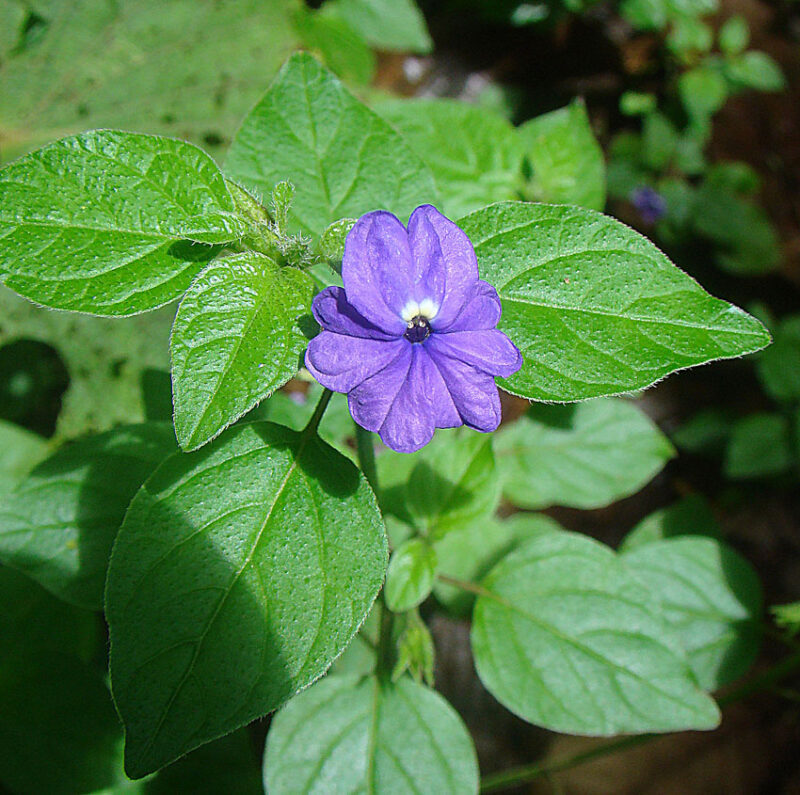
Browallia is a lesser-known yet stunning annual that produces lovely blue or violet flowers. Known as the bush violet, Browallia thrives in partially shaded areas, making it an excellent choice for woodland gardens or shaded borders. Its petite, star-shaped blossoms emerge in abundance, creating a soft blue haze in the landscape.
Available in various forms, including upright and trailing varieties, Browallia supports versatile planting styles. This plant can excel in containers and hanging baskets, where its blooms can cascade beautifully. Browallia is also appreciated for its lengthy flowering period, extending from spring until the first frost, delighting gardeners throughout the growing season.
Larkspur
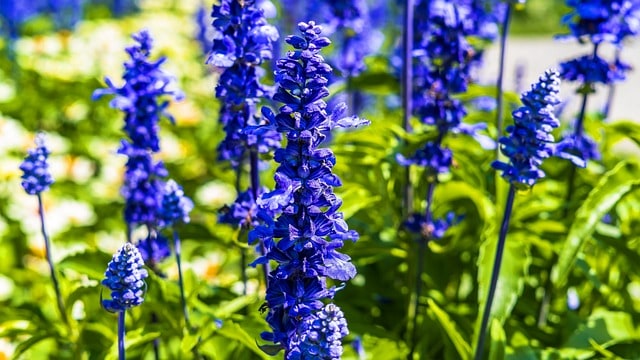
Larkspur, with its tall spikes of brilliantly blue flowers, is a visual showstopper in gardens. While it is primarily biennial, many gardeners grow it as an annual for its exceptional blooms. Larkspur flourishes in full sun and prefers rich, well-draining soil, making it an ideal addition to flower borders or cutting gardens.
These elegant blooms can reach impressive heights, creating a dramatic focal point. The flowers’ unique shape adds visual interest and variety to garden displays. In addition to their beauty, larkspurs are known to attract butterflies, contributing to an ecological balance and thriving outdoor atmosphere.
Petunia
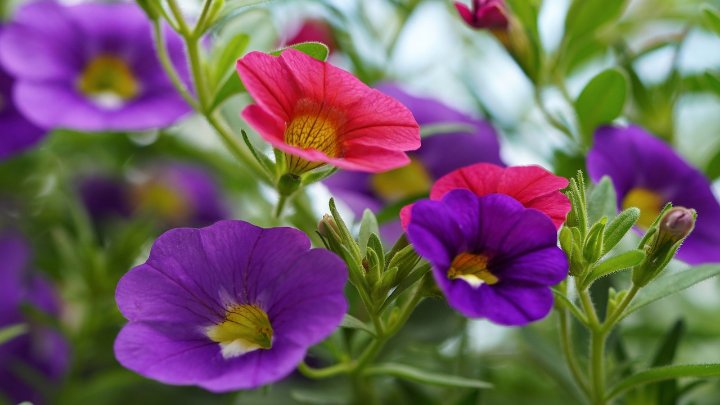
Petunias come in a plethora of colors, with the blue varieties capturing the hearts of many gardeners. These popular annuals are perfect for giving gardens a cheerful splash of color during the growing season. Petunias bloom profusely from spring until frost, producing trumpet-shaped flowers that come in shades ranging from pastel to deep navy blue.
Aside from their stunning appearance, petunias are incredibly versatile. They can be used in garden beds, borders, or hanging baskets, draping elegantly over edges. Petunias thrive best in well-drained soil and full sun and are generally low-maintenance, making them a beloved choice for gardeners of all levels.
Morning Glory

With their unique, trumpet-shaped flowers, morning glories create a fantastic display in any garden. Although they often showcase vibrant shades of blue, they come in other colors too. This enchanting vine grows vigorously, making it perfect for trellises, fences, and arbors, and quickly adds vertical interest to your garden space.
Morning glories love the sun, thriving in warm conditions, and they bloom primarily in the morning, creating a stunning spectacle as they open to greet the day. Their rapid growth and abundant blooms can quickly transform a dull area into a lush, vibrant space. Morning glories are also known to attract hummingbirds and butterflies, further enhancing their appeal in any garden setting.
Brachyscome Iberidifolia
Brachyscome Iberidifolia, commonly referred to as the blue daisy, is an eye-catching annual that boasts stunning blue flowers. This species is particularly well-suited for rockeries, containers, or mass plantings, where they can spill beautifully over the edges. The blue daisies feature bright, cheerful blooms that can enliven garden spaces from spring to late summer.
These hardy plants thrive in full sun and prefer well-drained soils, making them an excellent option for gardens in warmer climates. Brachyscome Iberidifolia is also great for attracting bees and butterflies, thereby promoting a healthy ecosystem in your garden. Their resilience and beauty make these blue daisies a favorite among many flower enthusiasts.
Vinca
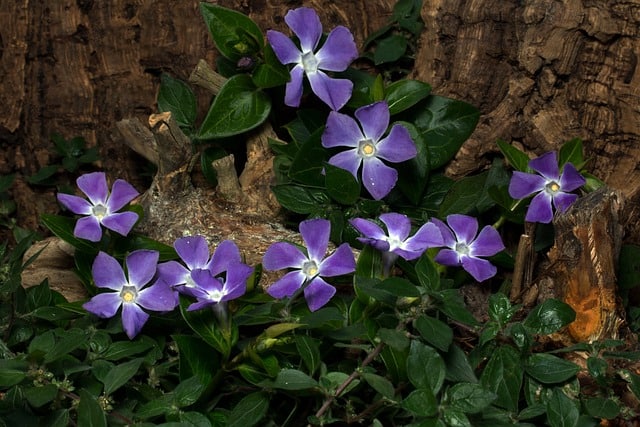
Vinca, commonly known as periwinkle, features lovely blue flowers that can bring life to your garden with their joyful hue. These annuals are particularly valued for their ability to flourish in challenging conditions, including heat and drought. Vinca thrives in well-draining soil and can thrive in both sunny and partially shaded areas, making it a versatile option for any space.
The flowers of Vinca can be either single or double, adding variation to your garden design. They bloom continuously throughout the summer, providing vibrant colors and low-maintenance options. Additionally, vinca is effective in suppressing weeds, making it an excellent choice for filling empty spots in the garden.
Evolvulus

Evolvulus, often known as blue daze, is a beautiful trailing annual that showcases vibrant blue flowers all summer long. This plant is perfect for hanging baskets and container gardens, where its trailing habit can create a lush cascade of color. The whimsical blue flowers contrast beautifully with the plant’s rich, green foliage, creating a stunning effect.
Evolvulus thrives in full sun and well-drained soil, and once established, it displays resilience against drought conditions. Its ability to attract bees and butterflies adds even more charm to any garden. Ideal for gardeners seeking low-maintenance yet breathtaking floral displays, Evolvulus is a must-have annual.
Love-in-a-Mist
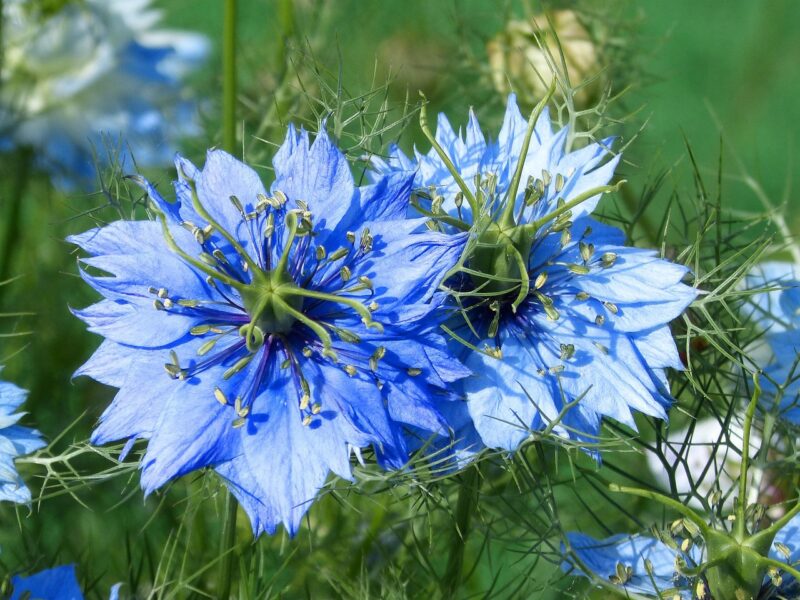
Love-in-a-Mist, or Nigella damascena, adds a touch of romance to any floral arrangement with its delicate, ethereal blue blooms. This unique annual features finely dissected foliage that creates a beautiful backdrop for its charming flowers, often adorned with feathery petals and interesting seed pods.
Love-in-a-Mist flourishes in full sun to partial shade and prefers well-drained soil. Not only is it visually captivating, but it also attracts a myriad of pollinators, adding to its garden charm. With self-seeding tendencies, Love-in-a-Mist can grace your garden with its striking beauty year after year without much effort.
Cineraria

Cineraria, known for its vibrant blue flowers, has been an adored choice among gardeners for many years. This annual behaves as a perennial in warmer climates, blooming profusely throughout the cooler months of the year. Cineraria’s vibrant blooms, often featuring contrasting white or yellow centers, are a delight in shady areas, making them ideal for underplanting.
These plants require rich, well-draining soil with consistent moisture to perform well. The soft, silvery foliage coupled with its spectacular flowering capacity makes Cineraria a standout favorite among many gardeners looking for that perfect touch of color.
Lobelia
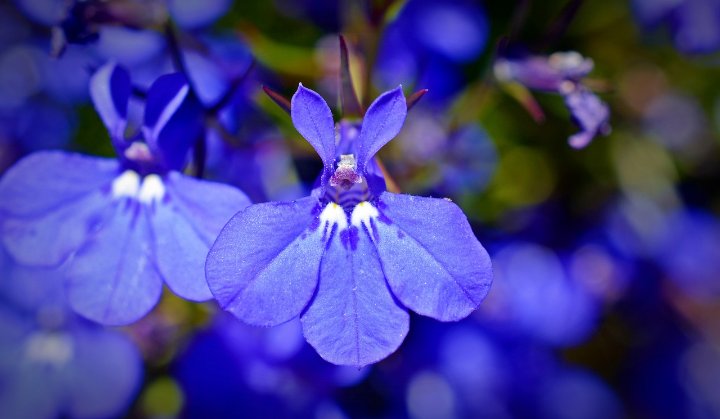
Lobelia is cherished for its breathtaking blue flowers and delicate trailing habit. This lovely annual can be utilized in borders, hanging baskets, or container gardens, where it can spill delightfully over the sides. Lobelia blooms profusely throughout the summer, offering a profusion of small blossoms that create a stunning mat of color.
Lobelia prefers cooler weather and partial shade, making it an excellent choice for early spring and fall gardens. With its resilience and ability to attract pollinators, it’s a fantastic addition to any flower display. Gardeners often appreciate how lobelia can fill spaces, creating harmony within a vibrant floral palette.
Verbena
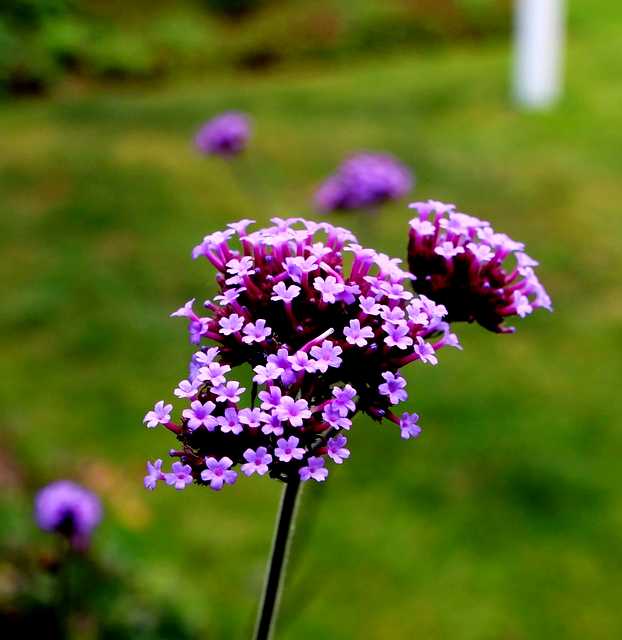
Verbena is celebrated for its clusters of small, delicate flowers that bloom in various shades, prominently featuring stunning blue varieties. This vigorous annual attracts butterflies and adds a charming touch to gardens throughout the summer. With its sprawling habit, verbena works exceptionally well as a ground cover or in container gardens.
Verbena is resilient to heat and drought, thriving in full sun and well-drained soil. Gardeners love the continuous blooming nature of this annual, which grows quickly and fills garden beds, trailing beautifully over borders. Its vivid colors, coupled with low maintenance requirements, make verbena a popular choice for gardeners of all experience levels.
Nemesia

Nemesia introduces a delightful splash of color to gardens with its small, fragrant flowers that often bloom in charming shades of blue. This annual is known for its lovely compact shape, making it perfect for garden beds or containers alike. Nemesia thrives in full sun to partial shade and blooms in late spring through summer.
Known for its unique, delicate flower spike formation, Nemesia is sure to attract attention in any floral setup. They prefer rich, well-draining soil and moderate watering for optimal health. Additionally, the pleasant fragrance of Nemesia will create an inviting atmosphere for you and your garden visitors.
Calibrachoa
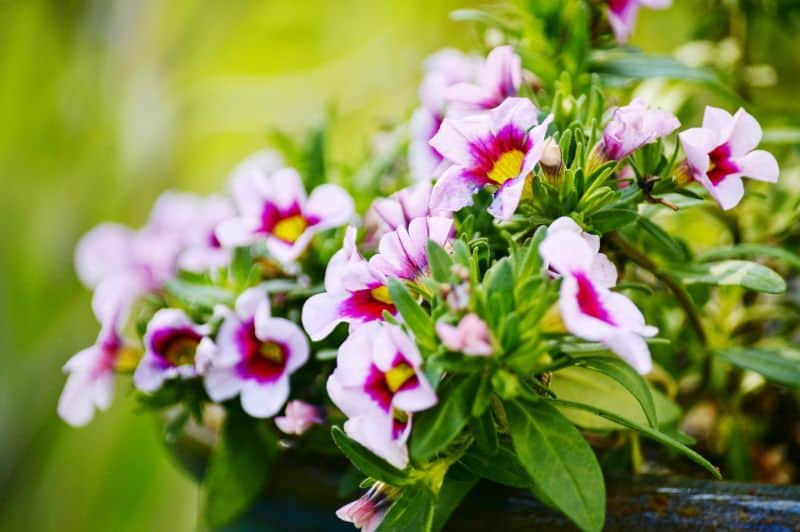
Calibrachoa, often referred to as million bells, provides an enchanting display of tiny, vibrant blue flowers that resemble petunias. This versatile annual is perfect for hanging baskets, window boxes, or containers, where its cascading habit can create stunning visual effects. The profuse blooming nature of Calibrachoa makes it a popular choice for gardeners looking to add color with minimal fuss.
This lovely plant thrives in sunny locations and prefers well-drained, fertile soil. Once established, Calibrachoa is resistant to drought, making it low-maintenance. Plus, it has a long flowering season from spring until the first frost, ensuring that your garden remains vibrant throughout the growing months.
Pansy
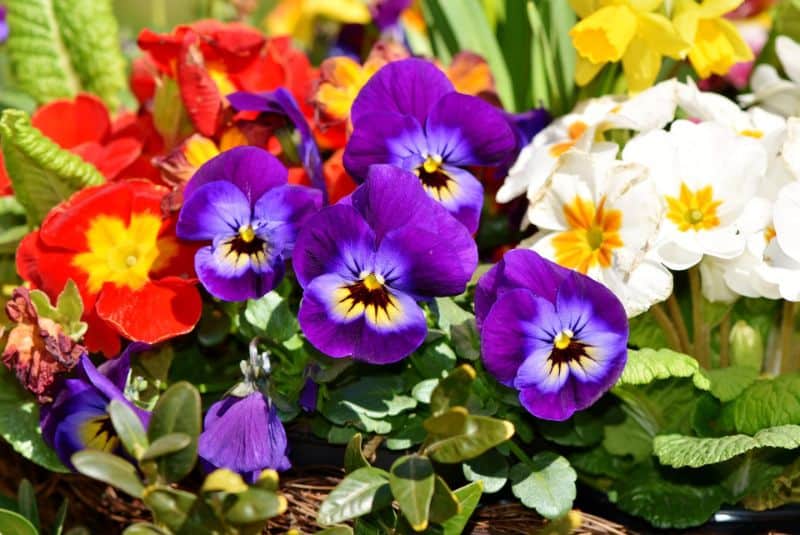
Pansies, the quintessential spring flower, are beloved for their large, velvety blooms that come in various colors, including delightful shades of blue. These cool-season annuals are perfect for early spring gardens or fall displays, thriving in cooler weather. Their friendly faces and rich colors bring joy and vibrancy to garden beds, containers, or window boxes.
Pansies prefer well-drained soil enriched with organic matter and thrive in full sun to partial shade. Regular watering and deadheading will encourage continuous blooming throughout their growing season. With their versatility and captivating beauty, pansies are a must-have for any garden, bringing a cheerful atmosphere with their lively colors.



